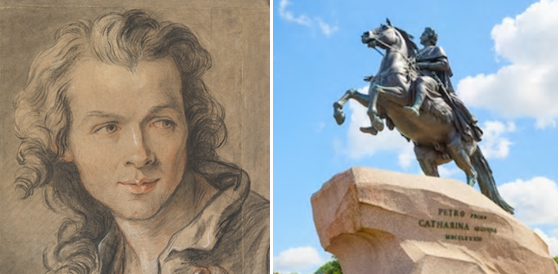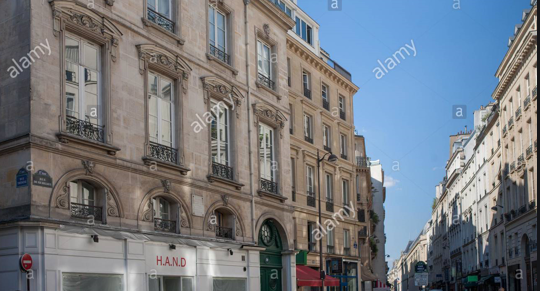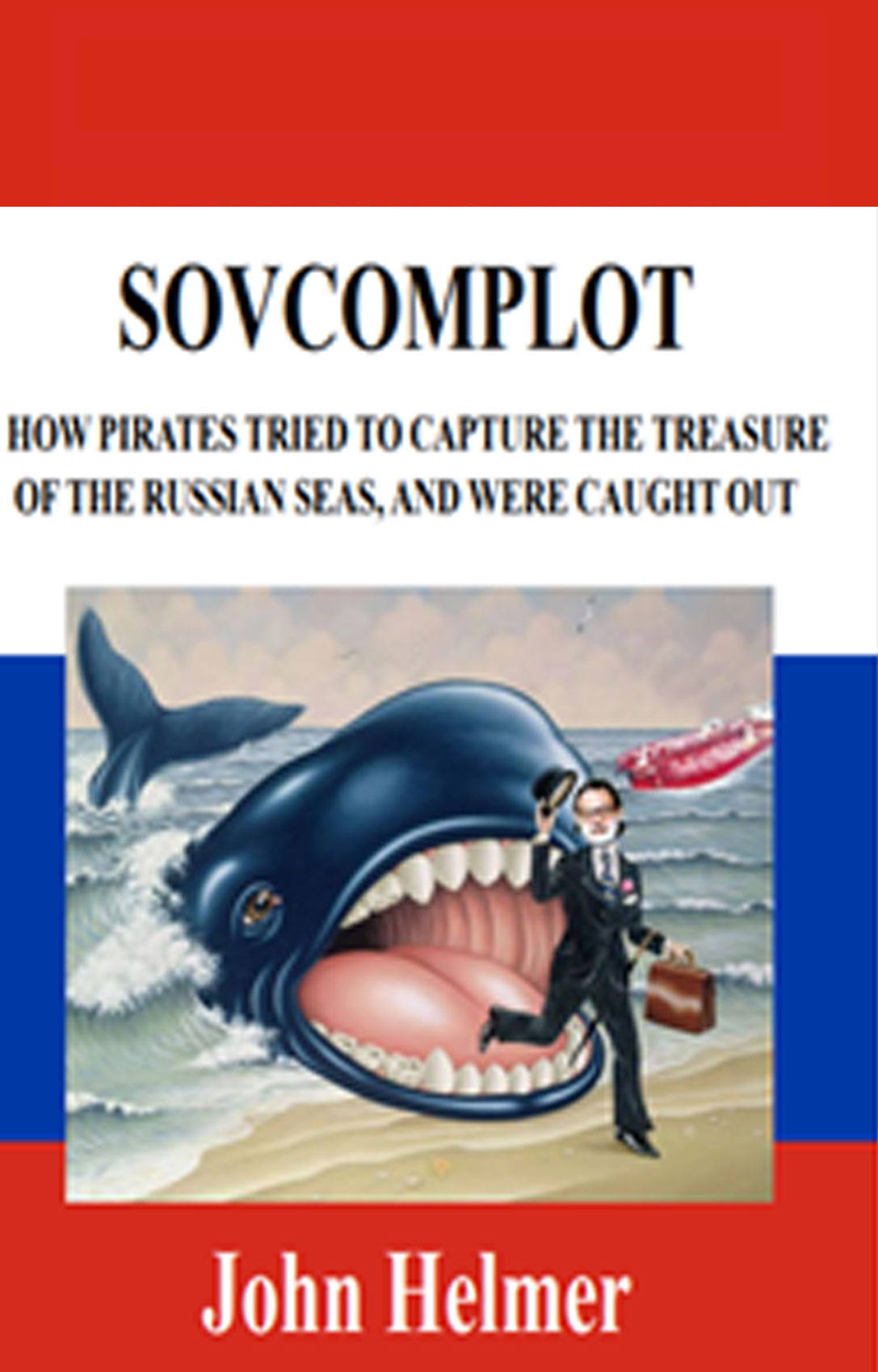
by John Helmer, Moscow
@bears_with
A new book has just been printed by Harvard University Press, written by a professor of French history at the University of Houston, Texas, explaining five ideas for Americans from events which took place in the court of Empress Catherine II (the Great) in St. Petersburg over five months between October 8, 1773 and March 5, 1774.
The first idea is that it is ethical for Americans to support the overthrow of the ruling regime in Russia. The second is that when it comes to international law or rules-based order in the world, the US is superior to Russia. The third is that Russia’s rulers can spend the modern equivalent of millions of dollars on buying positive PR for themselves abroad, but the message is never credible. The fourth is that the best way to improve Russian morals is to plant a colony of foreigners into the middle of the country’s administration so that “their particular character will spread and become generalized”. And the fifth idea is that Crimea isn’t really Russian because Catherine took it from the Turks by the war ending in the Treaty of Kuchuk-Kainarji, signed on July 21, 1774.
Robert Zaretsky, the author of the book and these ideas, reports the treaty signing on July 23, a mistake by two days. That’s the least of Zaretsky’s mistakes.
“Catherine & Diderot” was published in February of this year. Its subtitle, “The Empress, the Philosopher, and the Fate of the Enlightenment”, explains that Zaretsky is telling a history of the roughly forty conversations the French writer Denis Diderot (lead image, left), then just turned 60 and suffering from diarrhoea he picked up from drinking the water of the Neva River, held with Catherine (right) in the afternoons, twice a week.
Amazon reports only three and a half stars for the book; one of its reviewers reports “the writing style is a challenge – this text is NOT chronological so keep notes.” Foreign Affairs, the organ of the Council of Foreign Relations in New York, commented this month that “Diderot eventually concluded that the concept of enlightened despotism was an oxymoron and that Catherine, alas, was merely a despot”.
A Los Angeles newspaper, which has been paying Zaretsky (right) for his book reviews, commented that he had written “a scintillating, sophisticated, and nuanced book that not only recounts the remarkable story of the Russian ruler and the French thinker, but also explores the complicated dance between power and ideas in the Age of Reason.” It added a relevance today tag. “Had Diderot lived to see the Terror of the French Revolution, Zaretsky concludes, he most likely would have shared the revulsion it provoked in Catherine and would have seen more clearly how much he and the empress shared intellectually. ‘Both were inevitably flawed and fallible,’ he writes, ‘but what is […] perhaps more important is that they both remained fully attached to the party of humanity.’ If only the same could be said for many of today’s leaders.”
Which leaders the newspaper reviewer omitted to say; Zaretsky is less coy.
Catherine came to power in 1762 as the figurehead of a putsch of court noblemen and military commanders who considered her more fit for their purposes than her husband, Tsar Peter III. He was then liquidated. The cover story was that he had died of an attack of haemorrhoids. The unbelievability of this was only one of Catherine’s obvious problems. Buying advertising and hiring public relations agents were one of the methods she decided on to improve her legitimacy abroad. For France, a major military adversary for Russia, her first pick was Voltaire who was already on retainer for having written a promo for Peter I (the Great) — “reformer of manners, the creator of arts, of a navy and commerce,” etc. Voltaire’s task had been to combat the French state’s alliance with Peter the Great’s enemies starting with Sweden; but reason of state prevailed over Voltaire’s unctuous prose. His new assignment was to set Diderot up for a lucrative subscription offer from Catherine for the Encylopedia Diderot was working on. Her terms included moving the production of the Encyclopedia closer to her reach, in Riga.
Diderot calculated that while Catherine was a regicide, she wasn’t a tyrant. Tyrannicide might be justified, Diderot believed, and Catherine’s rule legitimized if, he had scribbled in one of his Encyclopedia entries, her “authority is limited by the laws of nature and of the state.” Whatever they were in Russia in the mid-18th century, Diderot hadn’t the foggiest clue, but he was sure he could do a better job on the empress than Voltaire’s brown-nosing of Catherine’s unrelated predecessor, Peter the Great.
Diderot also needed money badly, he told Catherine’s ambassador at the French court in Versailles and through other intermediaries to Catherine’s court. To marry his daughter, Diderot needed to raise a dowry, and for that he proposed selling his library to the Russians. This was Diderot’s face-saver; the daughter was only nine years old at the time.
His asking price for three thousand books was the equivalent in today’s money of $210,000; or about $70 apiece. Catherine not only agreed, but offered to pay Diderot on top an annual retainer of $14,000, and his retention of the library until he died. Some of the money was paid in advance through the Russian Embassy. How much Catherine thought she was paying, and how much reached Diderot’s pocket aren’t explained by Zaretsky, though he acknowledges there were inexplicable shortfalls.
In addition, Diderot was engaged to arrange purchases of French, Italian and Dutch paintings for Catherine to display on her palace walls in competition with the other monarchs of Europe. He took commissions, shared with some of Catherine’s go-betweens. More than five hundred canvasses were bought; how much Diderot trousered from this art dealership Zaretsky has forgotten to tell. He also omits to explain whether Diderot had any other source of income for his apartment rent, food, candles, quills, and ink. Apparently not.
Diderot’s first known assignment for the Russian secret service was to stop publication by a French eyewitness of Catherine’s 1762 coup and how Peter III met his end. That was Claude-Carloman de Rulhière (right). Diderot told him, “not all truths are good to speak”. When this didn’t work, Catherine ordered one of her embassy men to join Diderot in heavying Rulhière at home, and also to spy out where Rulhière was keeping his manuscript. Diderot reported to Catherine he “did everything possible”. Rulhière didn’t say yes, but he didn’t publish for another thirty years.
Zaretsky is impressed by 18th century “pomp and circumstance”, a phrase he writes repetitively. He also repeats multiple anachronisms to suggest the idea that between then and now there is much that is similar. An early fiction by Diderot is described as “an ancestor to Eve Ensler’s Vagina Monologues”; a later novel “anticipates the work of another Irish classic…Waiting for Godot”; an even later piece of Diderot’s non-fiction about Tahiti avoids being “an eighteenth-century version of Club Med”; and at least one of his talking-points with Catherine was “a remarkably prescient, nearly Orwellian insight”. Zaretsky also interrupts his narrative on Diderot’s “form of illusionism we call realism” with an aside about his own daughter’s “cramps and a headache”. In real life,” according to Zaretsky, “stuff happens”. One place Zaretsky writes it happened to Diderot was on the “Borscht Belt”.
The chapter leading up to Diderot’s arrival in St. Petersburg is titled “Glasnost”. This is one of Zaretsky’s many hints at Russia’s modern rulers, Mikhail Gorbachev, Boris Yeltsin, and Vladimir Putin. Zaretsky’s term also covers the Pugachev Cossack and peasant rebellion, which started the month before Diderot’s arrival in St. Petersburg, and ended in September 1774, six months after Diderot left.
Zaretsky acknowledges he doesn’t know what Diderot knew about the rebellion or what he and Catherine discussed on the topic. It’s certain she needed Diderot for this second time to explain in Paris and the rest of Europe why the rebellion amounted to no threat to the legitimacy of her power, or her methods. Apparently Diderot and she agreed on the necessity for governance by propaganda, fake news, subversion. Diderot, according to Zaretsky, “took great pains to emphasize that the people, even if they are not truly free, must at least ‘believe themselves to be free’…At this moment Diderot showed himself to be as keen a political realist as his host.”
In fact, Zaretsky concedes, Diderot carefully avoided Russian realism. He questioned no more than a “handful” of Russian court officials for information about the country whose governance he was discussing with the empress twice a week. His diarrhoea kept him in bed a good deal, not receiving visitors or going out to dinner. Instead, his principal conversations and sources of information, apart from Catherine, were French expatriates. Many of them, Zaretsky also acknowledges, were jealous of Diderot’s access to the empress, and plotted to undermine him, replace him, or spy on him. In one episode, Diderot was ordered by the French ambassador to lobby Catherine in order to “eliminate, if possible, the prejudice the Empress feels for us.” Zaretsky thinks Diderot was threatened with prison on his return home to Paris if he didn’t do as he was told. Diderot’s solution was to play the double agent, handing over to Catherine the script he had been given by the ambassador. She screwed up the paper and threw it in the fireplace, telling Diderot to report back what she had done; that’s according to a later account by the British ambassador.
If Catherine arranged a honey-trap or two for Diderot between bowel movements is also unknown to Zaretsky, though he’s painstaking to repeat that Etienne-Maurice Falconet, the sculptor at work on the equestrian statue of Peter I, came to town with a French girlfriend. Falconet’s deal was another of Diderot’s commissions. Exactly why Falconet didn’t want Diderot to stay in his house is noted but not explained in Zaretsky’s history. Perhaps Falconet suspected Diderot of skimming off the sculptor’s fee.

Left: Falconet the sculptor (1716-1791); right, his statue of Peter the Great in St. Petersburg today.
Perhaps, might, would, and other conditionals are a favourite device of Zaretsky’s, after he had rummaged through Diderot’s published letters and Catherine’s memoirs to fill in what they said to one another. Since they spoke together alone, there were no witnesses. What’s new is Zaretsky’s interpretations.
Diderot prepared written memoranda for most of the meetings; it isn’t clear whether he delivered them to Catherine in advance, one meeting at a time; put them in her lap as he arrived, used them as speaking notes, composed them after their conversation as an aide-mémoire for next time, or made them up for posterity. Zaretsky doesn’t know how many meetings took place. At the start of the book he reports “several dozen encounters”; other sources report more than forty. By February 22, 1774, the date on a farewell letter Diderot drafted for Catherine, he had already met her for the last time. The paper he presented on that occasion purportedly began with Point 1: “I don’t want others to think my praise has been bought”. That was followed by Point 2, a request for reimbursement of travel costs. She gave him 3,000 roubles – about $100,000 in current money – plus a specially fitted-out coach and a ring from her finger. There’s no record of Diderot complaining at the contradiction between points 1 and 2.
The empress kept paying; Zaretsky doesn’t keep tabs until mid-1784 when Catherine paid the rent for an expensive Paris apartment so that Diderot would not have to climb stairs. He died less than a month after moving in.

Left: 39, rue de Richelieu, Paris – Diderot’s last digs.
Catherine’s instructions to the fixers were also to find and “not to misplace a single shred of paper”. The library, including what the Russians thought were Diderot’s original unpublished manuscripts, were packed up and moved to St. Petersburg a year later. But the PR exercise Catherine anticipated after Diderot’s death didn’t work as planned. When she read what Diderot had written, Catherine reported in one of her letters that it was “genuine babble, bereft of experience, prudence and foresight.” Diderot’s views had been written after he had left Russia because “he never spoke to me about it.” After reproving him for his naivety and impracticality, she also claimed later: “Politics disappeared from our conversation, and all he would speak about was literature.” She also remembered retrospectively that she rarely got a word in edgeways — Diderot did all the talking.
Diderot started writing against Catherine when he reached The Hague. “Men of letters are so easily corrupted: lots of warmth and attention, and a bit of money, does the trick”, he admitted though not about himself. “The Empress of Russia is certainly a despot…Is it her intention to maintain the despotism and transfer it to her successors or to abdicate it?” His proposal was for the empress to create a Russian legislature, a legal code, public education, and a stop to serfdom, the Orthodox religion and censorship. Catherine’s spies learned what Diderot was writing; she ordered them to steal the manuscript. By the time Diderot reached Paris,that had been done.
Still, knowing what had happened and that the empress knew what he was thinking, Diderot spent the decade before he died pocketing more money from her. In mid-1779, for example, he asked for a fresh gift and received 2,000 roubles, which apparently were invested in Diderot’s son-in-law’s business. Diderot had kept at least one, possibly several copies of his “Observations on the Nakaz”, reserved for publication after his death. “There is no true sovereign except the nation,” Diderot had begun. “There can be no true legislator except the people.”
In the meantime Zaretsky reports Diderot’s proposal to promote his idea of a rules-based order for Russia’s enlightenment by introducing into the “middle of Russia” a colony of free foreigners; at the time Diderot identified them as Swiss. His idea of their role was to introduce “precious yeast” to the Russian loaf of bread. Later, Zaretsky reports that Diderot replaced the Swiss as exemplars of the rules-based order with Americans. “May all tyrants and oppressors, either political or religious, know that a place exists in the world where people can cast off their chains; where persecuted humanity has raised up its head again; where the harvest grows for the poor”. Publishing this in 1781, five years after the American revolution, Zaretsky implies that Diderot saw through both Catherine and Russia, and at the end had seen the light – in the United States.
Catherine’s grab of Crimea, according to Zaretsky, “allowed Russia to establish a powerful land and naval presence…laying the foundations for the bloody territorial disputes that have erupted in our own time.” And the last word from Zaretsky, also for right now: “though these two remarkable individuals precede us by nearly three centuries, their public ideals, which are increasingly besieged in the west, and their private decency, increasingly scarce among our leaders, are more important than ever.”














Leave a Reply